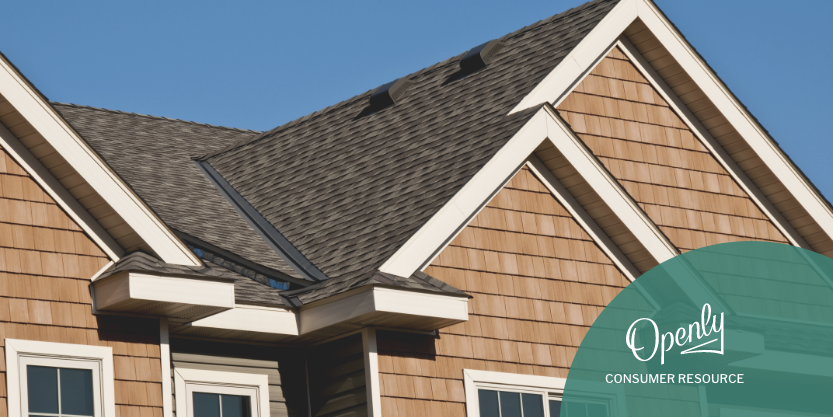Your roof isn’t just a roof; it’s your home's first line of defense against the elements. It shields you from rain, snow, wind, hail, and even sun, playing an important role in the structural integrity and comfort of your living space. However, like any other part of your home, your roof requires regular attention and care to ensure its longevity and effectiveness.
Neglecting roof maintenance can lead to costly repairs, water damage, and even premature roof replacement. Keep reading this guide to learn essential roof maintenance tips and how a roofing maintenance checklist can help you proactively protect your investment.
Table of Contents
1. Inspect shingles and roofing materials
2. Maintain flashing and sealant
3. Clean and repair gutters
4. Inspect the attic and ceilings
5. Address structural issues
6. Remove debris
7. Keep the roof surface clean
8. Annual inspections
9. Professional roofing service
At a glance:
- Consistent roof maintenance, including inspections and cleaning, is key to prolonging its lifespan, ensuring the safety, functionality, and comfort of your home.
- Interior checks for water stains, mold, insulation condition, and structural integrity in the attic can indicate hidden roof problems.
- Annual professional inspections are essential for identifying potential issues early and ensuring proper maintenance and repairs are conducted safely and effectively.
Why regular roof maintenance matters
Regular roof inspections and maintenance are important for identifying and addressing potential issues before they escalate into major problems. Proactive roof preventative maintenance can significantly extend the lifespan of your roof, saving you thousands of dollars in costly repairs or premature replacements. It also ensures the safety and well-being of your family by preventing leaks, mold growth, and structural damage.
Extend the life of your roof
The lifespan of a roof depends on several factors, including the materials used during construction and the quality of the installation. Fortunately, investing time and effort into routine roof maintenance can significantly extend the life of a roof. Regular inspections allow you to identify and address minor issues before they escalate into major problems, like keeping an eye on damaged shingles, cracks and leaks, or other signs of wear.
Neglecting roof maintenance may lead to costly repairs or even premature roof replacement. Through proactive repairs and cleaning, homeowners can avoid more extensive damage and professional intervention. Regular maintenance and minor repairs are generally more affordable compared to major renovations or restorations.
Cost savings and energy efficiency
A well-maintained roof contributes to better energy efficiency in your home, with proper insulation and ventilation, and fewer leaks, playing a critical role in regulating temperature and reducing energy consumption. Adequate insulation helps prevent heat loss in winter, or heat gain during the summer, allowing your HVAC system to operate efficiently and creating a more sustainable living environment—and cost savings.
Prevent water damage
Water, in all its forms, is the number one enemy of your roof. Leaks and water seepage can lead to rot, mold, structural damage, and can even compromise indoor air quality. Homeowners can keep water damage at bay by regularly checking for signs of water stains on the ceiling or walls, as they often indicate a roof leak.
Exterior roof maintenance
The exterior of your roof is constantly exposed to harsh weather conditions throughout the year, including heavy rain, hail and strong winds, making it susceptible to damage. Whether your roof is made of traditional shingles, tiles, or even solar shingles, here's how to maintain it effectively:
1. Inspect shingles and roofing materials
Regularly examine your shingles and other roofing materials for any signs of wear and tear. This includes checking for missing, cracked, or curling shingles. Pay close attention to granule loss, which can indicate that your shingles are nearing the end of their lifespan. Discoloration of roofing materials is another sign of potential problems. Promptly address any moss or algae growth. Moss and algae retain moisture, which can lead to rot and deterioration of your roofing materials.
2. Maintain flashing and sealant
Flashing is the metal material that surrounds chimneys, vents, skylights, and other roof penetrations. Inspect it for rust, dents, or damage. Ensure that the sealant around flashing is intact and replace it if it’s cracked or missing. Damaged flashing and sealant can allow water to seep into your home, causing leaks and water damage.
3. Clean and repair gutters
Clean gutters and downspouts regularly to remove debris like leaves, twigs, and branches. Clogged gutters can cause water to back up and overflow, leading to water damage to your roof, fascia, and foundation. Ensure that gutters are securely attached, properly aligned, and free of rust or corrosion.
Interior roof maintenance
While the exterior of your roof bears the brunt of the weather, the interior can also reveal signs of roof damage.
4. Inspect the attic and ceilings
Check your attic for water stains, mold, or mildew, which are telltale signs of a roof leak. Ensure that your attic insulation is in good condition and free of moisture or compression. Proper insulation helps regulate attic temperature and prevent condensation. Adequate attic ventilation is crucial to prevent condensation, which can lead to mold growth and wood rot.
5. Address structural issues
Observe the roofline from the attic or ceiling for any sagging or unevenness. These are signs of potential structural damage that require immediate attention. Repair any structural damage promptly to prevent it from worsening and causing more extensive problems.
Experience Peace of Mind with Openly
You deserve home insurance coverage that's straightforward and exceptional. Openly delivers the protection and confidence you need—so you can worry less and live more.
Regular roof cleaning
Regular cleaning is essential for maintaining the appearance and functionality of your roof.
6. Remove debris
Remove leaves, branches, and other debris from the roof’s surface to prevent clogging gutters and causing damage. Trim tree branches that hang over the roof to avoid damage from falling limbs or moss growth.
7. Keep the roof surface clean
Regularly clean the roof to remove dirt, debris, and algae buildup. Use appropriate cleaning tools and solutions to avoid damaging the roofing materials. It is important to not use high powered pressure washers, as they can remove the granules from asphalt shingles.
Schedule professional inspections
While you can perform some regular (and ongoing) roof maintenance tasks yourself, professional inspections can also bring peace of mind and improve the lifespan of your roof.
Attempting DIY roof repairs can be dangerous and may lead to further damage if not done correctly. Hiring a professional roofer ensures that the job is done safely and correctly, protecting your investment and ensuring your home’s safety.
8. Annual inspections
A professional roofer has the expertise to identify potential issues that may be difficult to spot with the untrained eye. They can also provide expert advice on roof repairs, replacements, and maintenance.
Hiring a professional roofing expert or roofer is essential for areas requiring specialized attention. In winter, it is especially important to prevent snow and ice damage. A professional can clear snow safely, and inspect for ice damming.
9. Professional roofing service
Professional roofing services can include roof repair, roof replacement, and roof cleaning. They can also provide roof inspection services, and give you a roof maintenance checklist.
Protecting your investment with proactive roof maintenance
Regular roof maintenance is an essential part of homeownership. A well-maintained roof is a critical investment in the long-term integrity, safety, and comfort of your home. By following these roof maintenance tips, you can extend the lifespan of your roof and ensure the safety and comfort of your home and loved ones while saving you money on costly repairs.
For home insurance that protects against unexpected roof damage, especially after a storm, consider connecting with Openly. From roofs and walls to landscaping and other structures, Openly delivers high‑value home insurance coverage that protects every corner of your property.
We provide this information to help you understand insurance. Any coverage is subject to the terms of your policy. Please refer to your policy and declarations page for complete terms, conditions, exclusions and coverage details. Openly may provide links that lead to an external website that may promote goods and services that Openly does not endorse. We are not responsible for the content, claims, or representations made on the linked website. Please review their terms and policies before engaging with any offerings.




